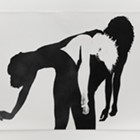Obesity has become one of the nation’s toughest, most common health challenges. And it’s happening right here in Washington. In fact, most people in our state — 60 percent at last count — are overweight or obese. Our kids are getting there, too. About one-third of our children are also overweight or obese.
Childhood obesity isn’t something kids typically outgrow. Just the opposite — obese kids usually become obese adults. For the first time in history, pediatricians are seeing type 2 diabetes in children. Type 2 diabetes usually occurs in adults who are obese.
Another unfortunate first is that our children now face shorter lives than their parents.
How did this happen? It’s complex. Many things have led us down this path. For example, children are much less active today and consume too many high calorie foods and drinks than children did 30 years ago. Physical activity has been engineered out of our lives. Our children are growing up in an environment where they rarely walk more than a block to a school bus and often have 30 minutes or less a day of physical activity at school.
We’re fortunate to have a governor who has made health a priority. We also have a First Lady who is bringing national attention to childhood obesity. Michelle Obama’s “Let’s Move” initiative gives a much-needed boost to the work we are already doing in Washington communities.
The work in Washington includes building a new playground for children with special health needs in Spokane, and helping cities like Moses Lake and Ellensburg build lasting partnerships among city planners, school administrators, businesses and community organizations. Through Healthy Communities Washington, we’re working in dozens of communities to make changes that will help people make the healthy choice the easy choice.
Healthy communities are healthy places. Health is more than individual choice — like eating more fruits and vegetables, and getting more exercise. If it were that simple, we wouldn’t be faced with an obesity epidemic in our state.
We need communities that can — and will — support health. It’s tough to walk more if your neighborhood doesn’t have sidewalks or is unsafe in other ways. Kids can’t swim without swimming areas, and can’t walk or bike to school if the route there isn’t safe. And it’s tough to eat healthy foods if you live in a “food desert” where your only choices are fast food restaurants and corner stores with few healthy choices.
We’ve got to get people moving — we’ve got to get ourselves moving, too. We have to get away from our desks, away from our TVs, and away from our computers and video games. We must make sure that city and transportation planning includes parks, trails, bike lanes and sidewalks.
Many of us have trouble getting in more than a five-minute walk from the car to our offices or schools. Our most recent information shows about one in three adults, and one in four high school kids, do not meet recommendations for physical activity.
Our kids should get 60 minutes of physical activity every day. Adults aren’t getting the minimum of 30 minutes a day needed just to maintain health. That has to change; it’s bad for us as individuals, and bad for our health care system overall.
One of my favorite quotes is from Benjamin Franklin: “An ounce of prevention is worth a pound of cure.”
I believe we’re in the prevention business together. Public health needs more partners in communities. We must make sure people in communities big and small have safe places to get out, get moving, and have fun.
Washington is one of the best, healthiest places to live in this country. Let’s work together to keep it that way.
OVERWEIGHT OR OBESE?
Based on your height and weight, your doctor can help you determine whether you are overweight. For example, if you are 5’9” and you weigh between 125 and 168 pounds, you are considered at a healthy weight — regardless of gender. At that height, if you weigh between 169 and 202 pounds, you are considered overweight. At 203 pounds or more, you would qualify as obese. To check the Body Mass Index chart, go to http://www.cdc.gov/obesity/defining.















